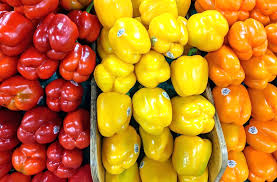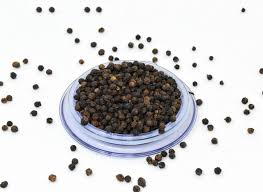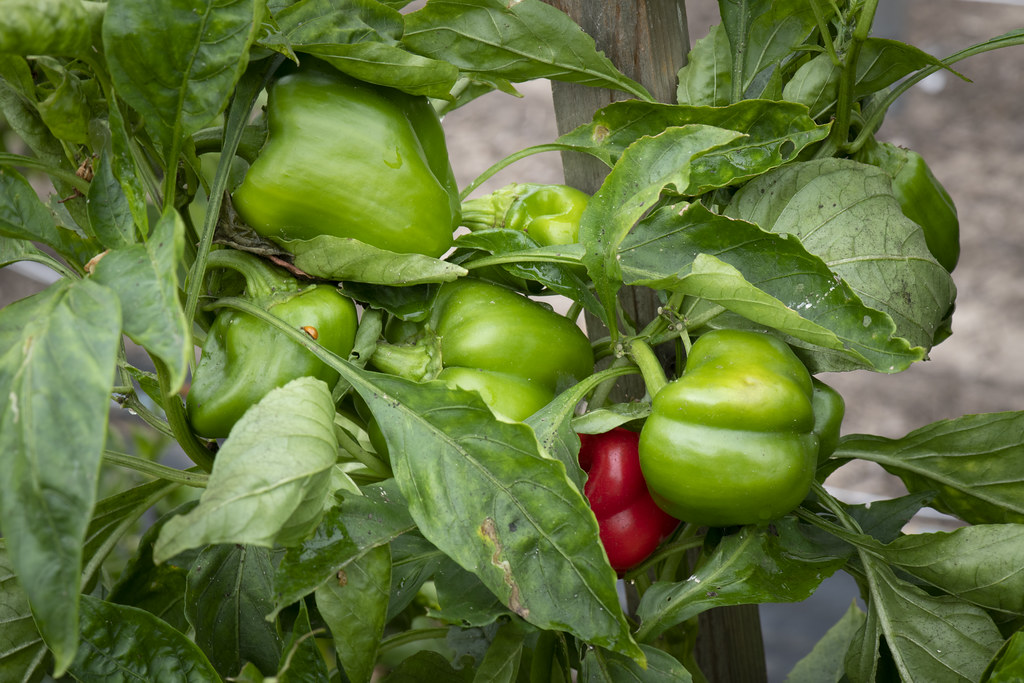Peppers are a versatile and rewarding crop for any home gardener. Whether you’re craving the sweetness of bell peppers or the fiery heat of habaneros, growing your own peppers can be an exciting and fulfilling experience. This comprehensive guide will walk you through every step of the pepper-growing process, from selecting seeds to harvesting your bounty. Whether you’re a seasoned gardener or a beginner, this post will equip you with the knowledge to successfully grow a variety of peppers in your garden
Pepper Varieties:

Peppers (Capsicum spp.) belong to the Solanaceae family, which also includes tomatoes and eggplants. There are five domesticated species of peppers, with Capsicum annuum being the most common. Peppers can be broadly categorized into sweet peppers and hot peppers:
Sweet Peppers:
- Bell Peppers
- Banana Peppers
- Pimiento Peppers
- Sweet Italian Peppers
Hot Peppers:
- Jalapeños
- Serranos
- Cayenne Peppers
- Habaneros
- Ghost Peppers
- Carolina Reapers
Each variety has its own unique flavor profile, heat level (measured in Scoville Heat Units), and growing requirements. Consider your climate, available space, and personal taste preferences when choosing which peppers to grow.

Selecting and Starting Seeds
Timing: Start pepper seeds indoors 8-10 weeks before your last expected frost date. Peppers have a long growing season and benefit from an early start.
Seed Selection: Choose high-quality seeds from a reputable source. Look for disease-resistant varieties if certain plant diseases are common in your area.
Materials Needed:
- Seed starting mix
- Seed trays or small pots
- Heat mat (optional but beneficial)
- Grow lights or a sunny windowsill
- Plastic dome or clear plastic wrap
Seed Starting Process: a) Fill seed trays or pots with moistened seed starting mix. b) Plant seeds 1/4 inch deep, 2-3 seeds per cell. c) Lightly cover with soil and mist gently. d) Cover the tray with a clear plastic dome or wrap to maintain humidity. e) Place the tray in a warm location (70-80°F is ideal). A heat mat can help maintain consistent soil temperature. f) Keep the soil consistently moist but not waterlogged. g) Seeds typically germinate in 7-14 days. Remove the plastic cover once sprouts appear.
- Caring for Seedlings:
Light: Provide 14-16 hours of light daily. If using a windowsill, ensure it’s south-facing. Otherwise, use grow lights positioned 2-3 inches above the seedlings.
Temperature: Maintain temperatures between 70-80°F during the day and no lower than 60°F at night.
Watering: Keep the soil consistently moist but not soggy. Water from the bottom to encourage strong root growth.
Fertilizing: Once seedlings develop their first true leaves, begin feeding with a half-strength, balanced liquid fertilizer every two weeks.
Thinning: When seedlings have 2-3 sets of true leaves, thin to the strongest plant per cell by snipping others at soil level.

Transplanting
Transplant seedlings when soil has warmed and all danger of frost has passed:
- Space plants 18-24 inches apart in rows 2-3 feet apart
- Plant slightly deeper than they were in their containers
- Water thoroughly after transplanting
- Add a layer of mulch to retain moisture and suppress weeds

Watering
Proper watering is crucial for pepper plant health:
- Provide deep, consistent watering
- Aim for about 1 inch of water per week
- Water at the base of the plant to keep foliage dry
- Use drip irrigation or soaker hoses for efficient watering
- Fertilizing
Peppers benefit from regular, balanced nutrition:
- Apply a balanced, slow-release fertilizer at planting time
- Side-dress with compost or a balanced fertilizer when first fruits appear
- Avoid excessive nitrogen, which can promote leafy growth at the expense of fruit production
- Supporting Your Plants
Many pepper varieties benefit from support:
- Use stakes or small cages to keep plants upright
- Tie plants loosely to supports as they grow
- This prevents fruit from touching the ground and improves air circulation
- Pest and Disease Management
Stay vigilant against common pepper problems:
- Watch for aphids, spider mites, and hornworms
- Monitor for signs of blossom end rot or bacterial leaf spot
- Use organic pest control methods when possible, such as neem oil or insecticidal soaps
- Practice crop rotation to reduce disease pressure

Harvesting
- Proper harvesting ensures the best flavor and encourages continued production:
- Harvest sweet peppers when they reach full size and desired color
- Pick hot peppers at any stage, depending on preferred heat level
- Use scissors or pruning shears to avoid damaging the plant
- Regular harvesting encourages more fruit production
- Extending the Season
Maximize your pepper harvest with these techniques:
- Use row covers or cold frames to protect plants from early or late frosts
- In cooler climates, consider growing peppers in containers that can be moved indoors
- Plant heat-loving varieties near walls or fences for extra warmth
- Saving Seeds
For open-pollinated varieties, save seeds for next year:
- Choose fully ripe peppers from healthy plants
- Remove seeds and dry them thoroughly
- Store in a cool, dry place in labeled envelopes
- Troubleshooting Common Issues
Address these common problems for healthier pepper plants:
- Blossom drop: Often caused by temperature extremes or inconsistent watering
- Sunscald: Prevent by ensuring adequate leaf cover or providing shade in extreme heat
- Stunted growth: May indicate nutrient deficiency or pest problems

Growing peppers is generally considered moderately easy, making it suitable for both beginners and experienced gardeners. Here’s a balanced view of the difficulty level:
Easier aspects of growing peppers:
- Low maintenance once established
- Relatively resistant to many common garden pests
- Can be grown in containers, making them suitable for small spaces
- Many varieties to choose from, suiting different climates and preferences
More challenging aspects:
- Sensitive to temperature fluctuations, especially when young
- Require a long growing season, which can be tricky in cooler climates
- Need consistent watering – too much or too little can cause issues
- Some varieties are susceptible to specific diseases
Tips to make pepper growing easier:
- Start with easier varieties like bell peppers or jalapeños
- Use seedlings instead of starting from seeds if you’re a beginner
- Ensure proper soil preparation and adequate sunlight
- Use mulch to maintain soil moisture and temperature
- Consider growing in raised beds or containers for better soil control

Growing peppers at home can be a delightful and rewarding experience. With proper care and attention, you can enjoy a bountiful harvest of sweet or spicy peppers straight from your garden. Remember that different varieties may have specific needs, so always research the particular types you’re growing. Whether you’re adding them to salads, stir-fries, or making your own hot sauce, homegrown peppers are sure to add flavor and excitement to your culinary creations. Happy gardening!
